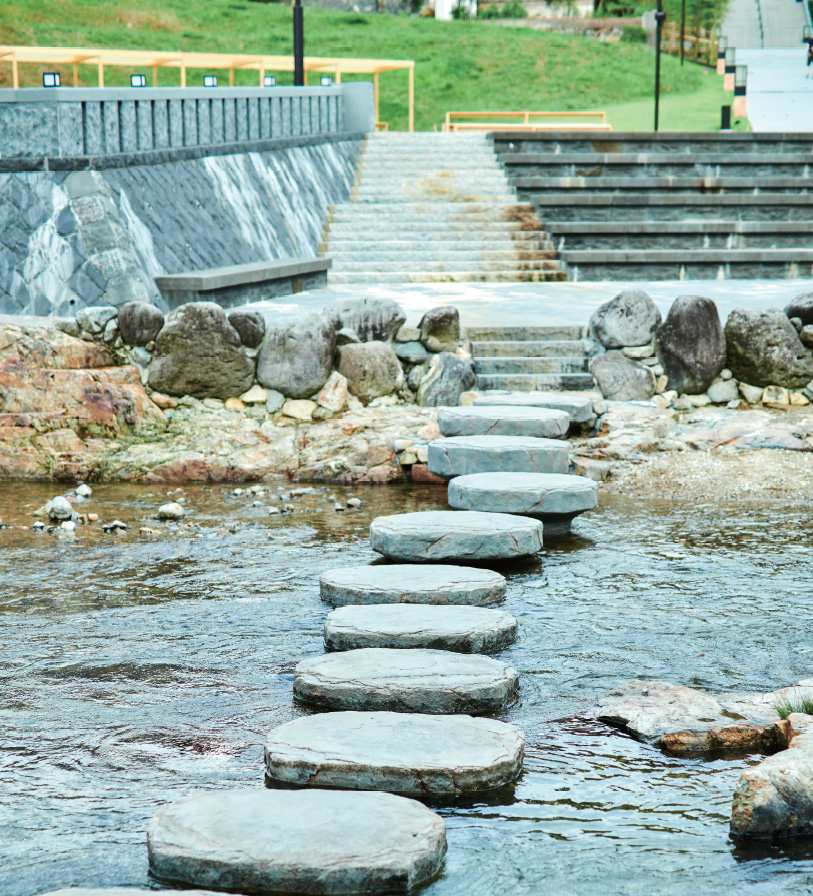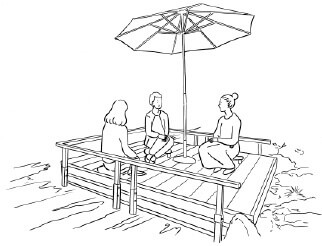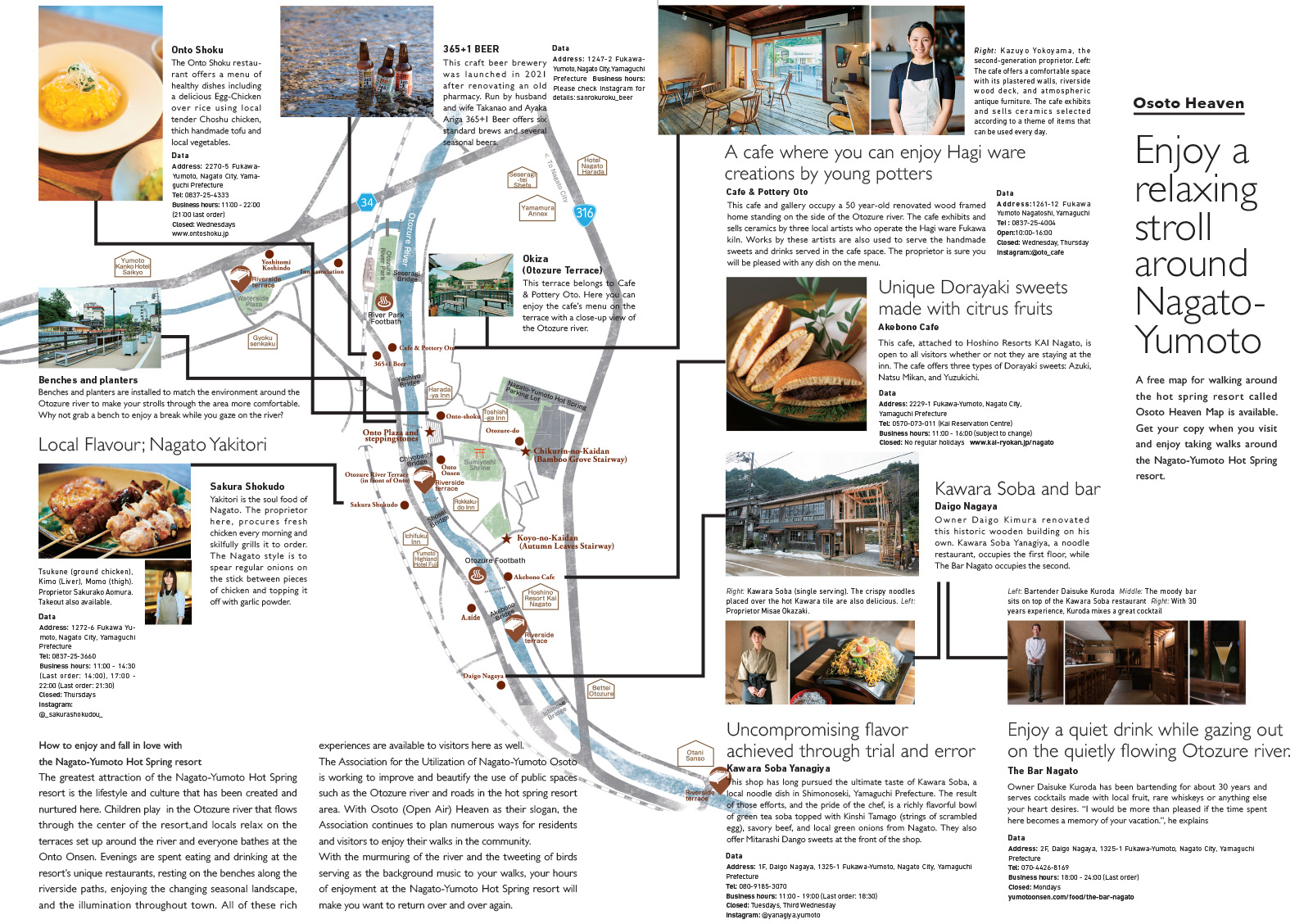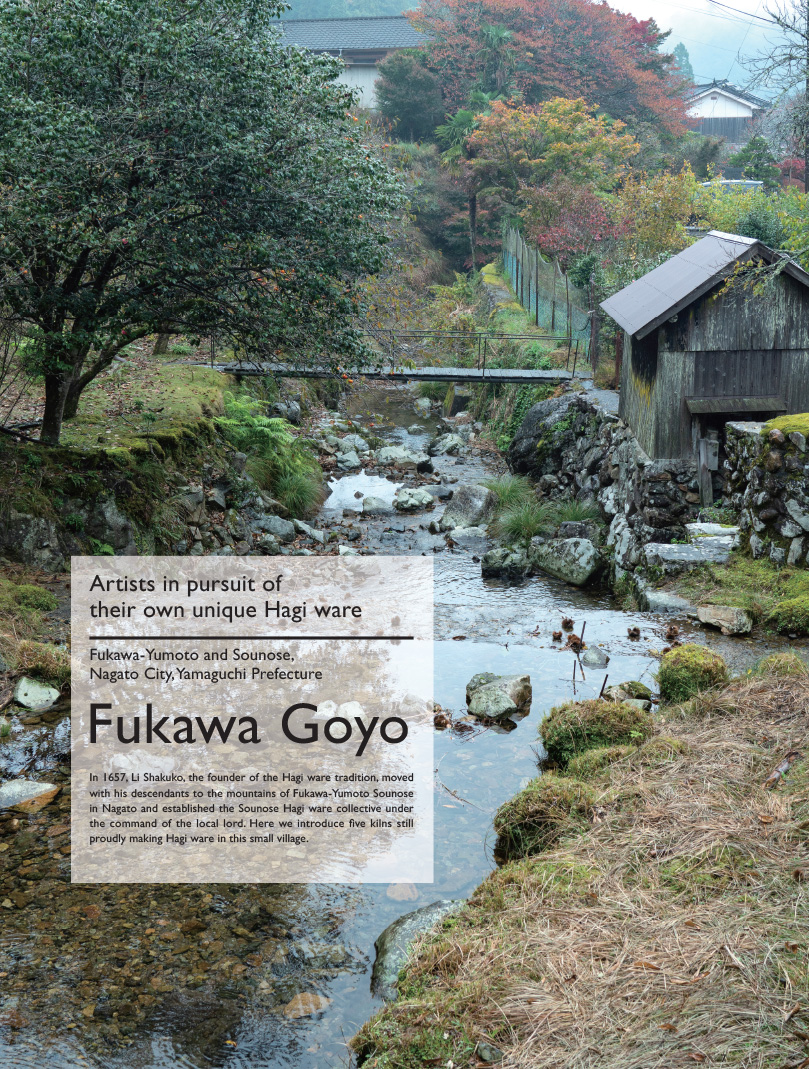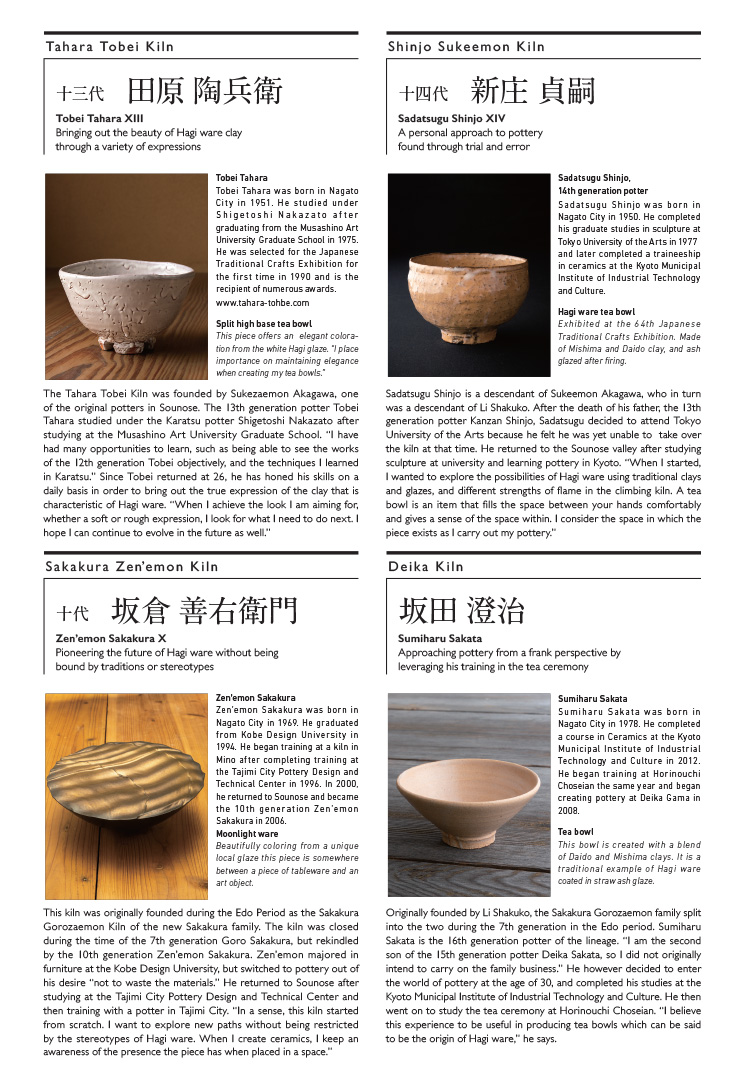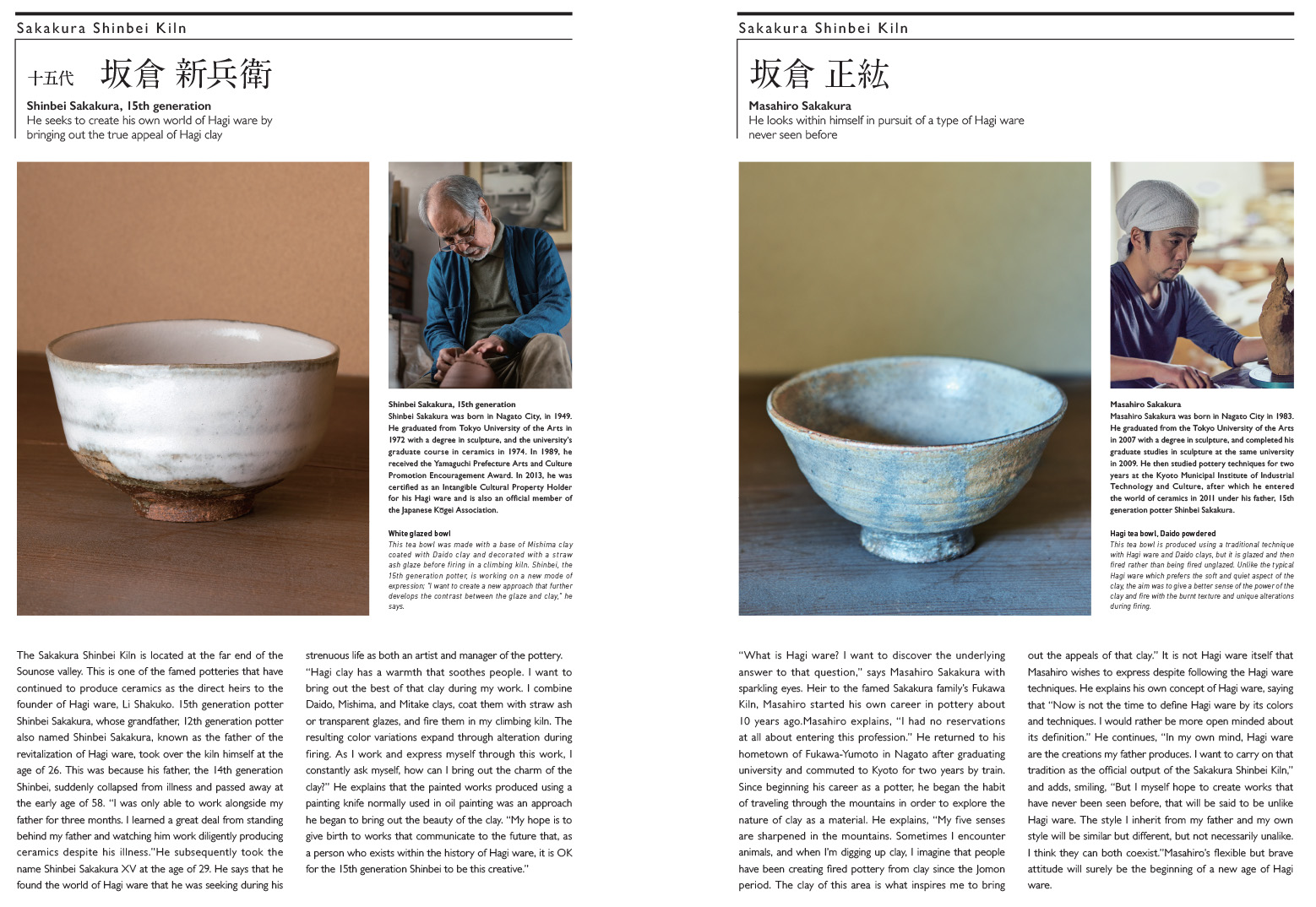DISCOVER NAGATO
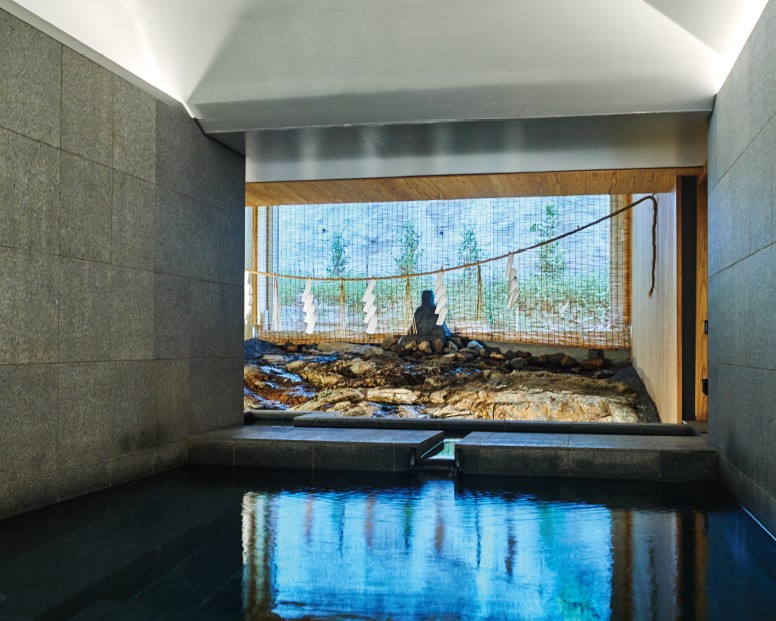
Overview and History
Onto Onsen
The Nagato-Yumoto Hot Spring is one of the most
famous hot spring resorts in Yamaguchi Prefecture. The
Onto hot spring that symbolizes the resort is enriched
by a complexity of history and legends. Let’s unravel the
mysteries together.
A famous hot spring gifted by the god Sumiyoshi Daimyojin
The Otozure river flows through the middle of the Nagato-Yumoto hot spring resort. The Onto Onsen located on its banks has been part of the daily lives of the residents for at least 600 years. Legend has it that one night, the third head priest of Taineiji Temple, Joan Shuzen, was walking the temple grounds, not far from the Onto hot spring, when he came upon a man engaged in Zen meditation on a rock. Shuzen asked the old man his name, and the old man answered with a Waka poem, “I am the God Sumiyoshi in the hidden place, now and of old, where the wind blows through the pines,” and his true form was revealed to be the God Sumiyoshi Daimyojin of Ichinomiya in the Province of Nagato. Shuzen invited the old man into the temple, and instructed him in the Way of the Buddha. Then, in 1427, when the old man was given a brocade robe by Shuzen, he said, “I have brought forth a hot spring. Please use it if you like,” to repay the kindness, and he transformed into a dragon and flew up into the sky. Today, the source of the hot spring remains in the possession of Taineiji Temple.
So what is legend and what is fact? We spoke with Keijo Iwata, the 53rd head priest of the temple, to find out. “Taineiji Temple is a temple of the Soto School founded in 1410 by local lord Washizu Hirotada, a member of a branch of the Ouchi Clan. The Ouchi Clan had amassed great riches through trade with China and Korea, and as Sumiyoshi Daimyojin is a god who protects travel across the sea, it is possible that the Ouchi Clan colluded with Taineiji Temple and Sumiyoshi Shrine to construct the story for political purposes.”
A stone statue of Sumiyoshi Daimyojin which has been passed down through the ages sits in the Onto bathhouse. Throughout, one can sense hints of why this hot spring is known as Shinju-no-yu, or A God’s Bath. Ancient records of temple activities in the Temple’s possession mention many episodes on the ‘hot spring gifted by the God Sumiyoshi.’ So surely Onto has been known as a sacred hot spring for many centuries.
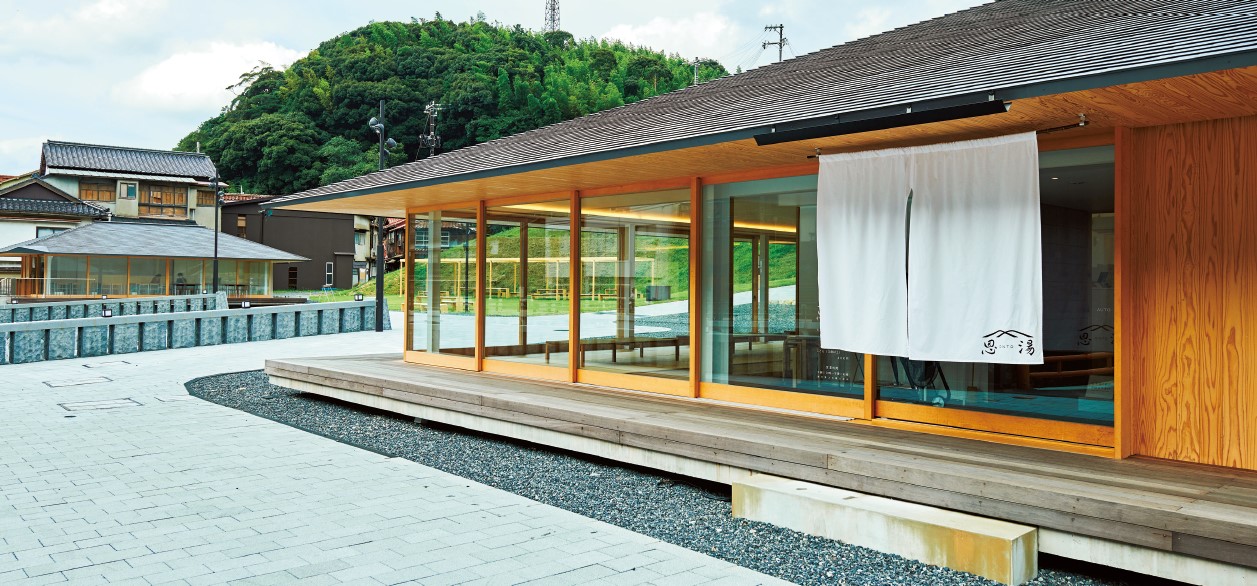
Architecture
Architecture that embodies the legend of Shinju-no-yu
The Sumiyoshi Shrine sits atop the hill overlooking the Onto Onsen. The renovations of the hot spring have resulted in a new scenic view created together with Sumiyoshi Shrine and the Otozure river.
The sky opens wide before you when you descend the bamboo grove stairway (Chikurin-no-Kaidan) to the green lawn of the Onto Plaza, accompanied by the soothing murmurs of the Otozure river resonating in the air. With the Onto hot spring on the left and the Onto Shoku restaurant on the right, the structures blend seamlessly into the nature around them, becoming a natural part of the landscape. We spoke with one of the architects, Shohei Oka, to learn more.
“The Onto hot spring waters bubble up from the bedrock covering the ground, so the conditions here are quite special. In ancient times, people likely bathed in the standing pools of water where it bubbled up from the bedrock. Accordingly, we designed baths to accept this naturally flowing water to recreate that natural approach.”
When you get into the baths, before you is the natural bedrock as it has always been, and you can watch the water flow from it. The water is a simple alkaline hot spring (pH 9.62). The hot spring water flows from the bedrock at 39°C, making it soft and gentle as it embraces your skin.
“Also known as Shinju-no-Yu (A God’s Bath), Onto is located right next to Sumiyoshi Shrine. Accordingly, we decided that it would be best to design the buildings so they become a part of the shrine. Thus, the Chiyobashi Bridge in front of the Onto hot spring is like the entrance to a sacred place. Passing from the door to the watch room is a stairway that leads up to Sumiyoshi Shrine. This represents a new path for worshippers visiting the shrine.”
“Three of the walls around the rest area are full-length glass. And the dining building across from it is also an almost identical construction. The plaza, Otozure river, and dining building come together to form a single space because we extended the eaves to add a long porch, or Engawa, along the building.”
